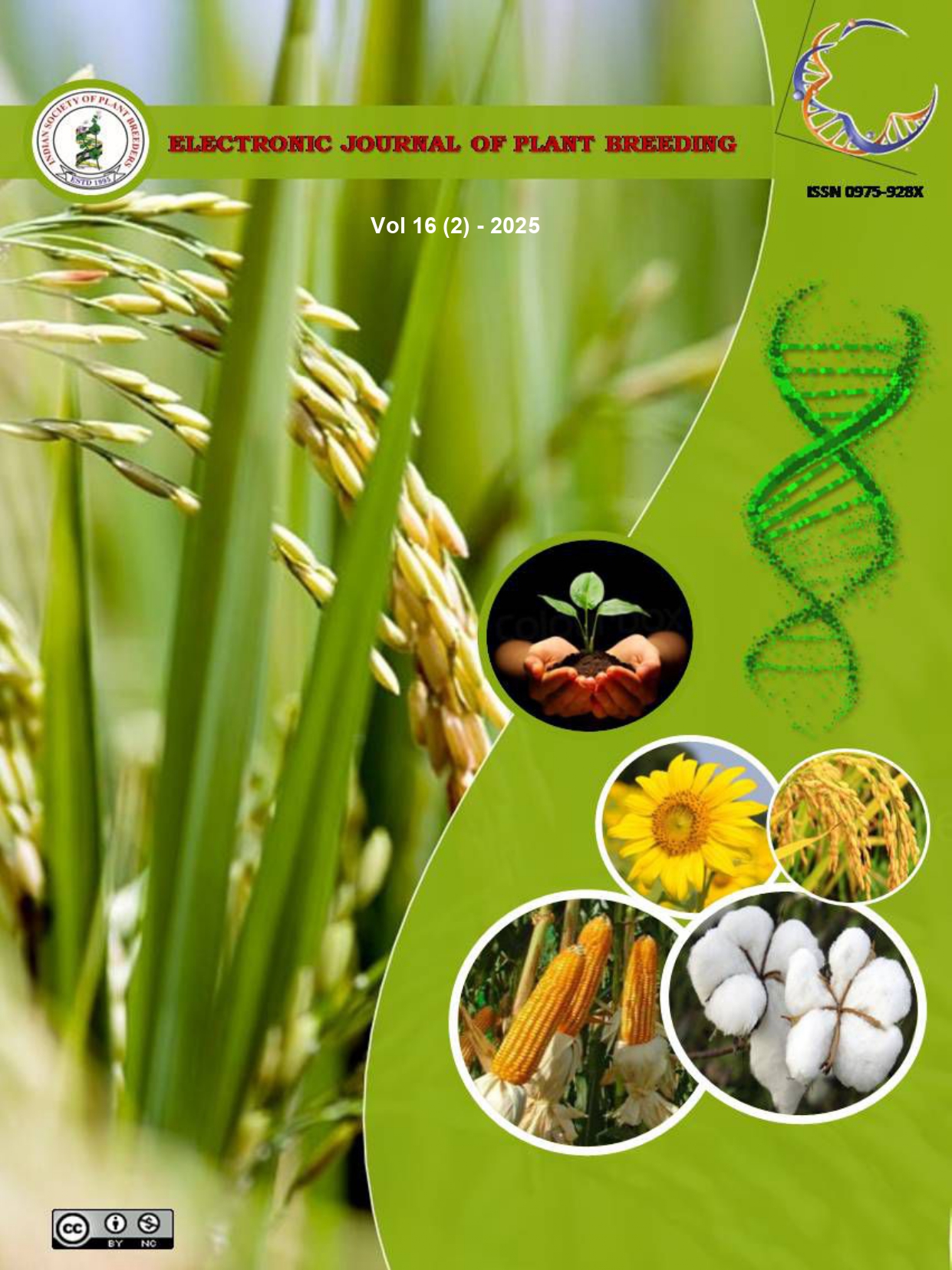Studies on combining ability and gene action for grain yield, head rice recovery and other agronomic traits in rice (Oryza sativa L.)
DOI:10.37992/2025.1602.018
Abstract
For many Asian nations, rice (Oryza sativa L.) is staple food and major source of nutrition. To fulfil the demands of an expanding population the rice production must increase. High temperatures of about 38-42° C and low relative humidity (<40%) is recorded in Telangana in the months of April and May during which the rabi rice crop is at grain filling to maturity stage. These conditions result in low head rice recovery percentage of rabi rice produce. Selection is an important technique in plant breeding and breeders use this method for improving the architecture of a crop by management of available genetic variability (Kohnaki et al., 2013). Breeding strategies based on selection of hybrids require expected level of heterosis as well as specific combining ability. Combining ability analysis is one of the useful tools available to estimate the combining ability effects and aids in selecting the desirable parents and crosses for the exploitation of heterosis.Additionally, it helps in understanding the nature and extent of gene action in the inheritance of specific traits. The Line × Tester analysis method, proposed by Kempthorne in 1957, is the most commonly used approach for identifying general and specific combiners and to study the nature of gene action governing the inheritance of different characters. Therefore, the present research work was carried out to estimate the nature of gene action and combining ability effects of parents and crosses for grain yield and quality traits in rice based on their mean performance, genetic parameters and heterosis.
Keywords:Combining ability,grain yield, head rice recovery, line×tester
Studies on combining ability and gene action for grain yield, head rice recovery and other agronomic traits in rice Oryza sativa L.
. 2025. Electronic Journal of Plant Breeding, 16 2, 225-233. Retrieved from https://www.ejplantbreeding.org/index.php/EJPB/article/view/5277It is certified that:
- The corresponding author is fully responsible for any disputes arising due to the publication of his/her manuscript.
- The article has been seen by all the authors who are satisfied with its form and content.
- The sequence of names of authors in the by-line is as per their relative contribution to this experiment, giving due credit to all scientists who made notable contribution to it.
- All the authors fully understand that inclusion of any other co-authors or exclusion of any co-authors is not possible once the article has been submitted to the journal.
- The corresponding author takes full responsibility for this article.
- The address of the organization where the research was conducted is given.
- The article is exclusive for this journal, and the results reported here have not been sent (and will not be sent during its consideration by this journal) for publication in any other journal.
- Authors agree to abide by the objective comments of referees and do agree to modify the article into a short note as per the recommendation, for publication in the Electronic Journal of Plant Breeding.
- If published in Electronic Journal of Plant Breeding, the copyright of this article would vest with the Indian Society of Plant Breeders, who will have the right to enter into any agreement with any organization in India or abroad engaged in reprography, photocopying, storage and dissemination of information contained in it, and neither we nor our legal heirs will have any claims on royalty.



